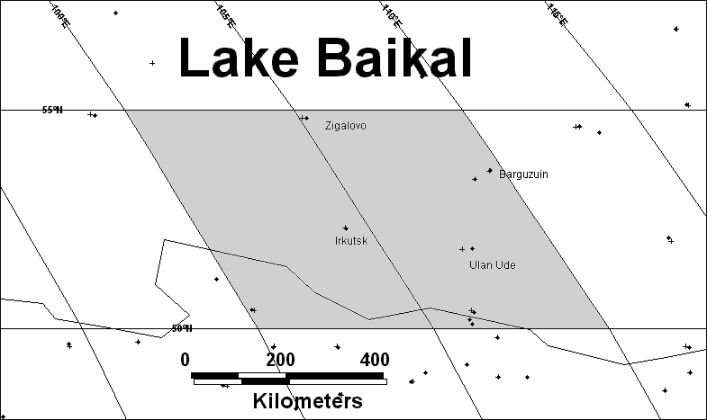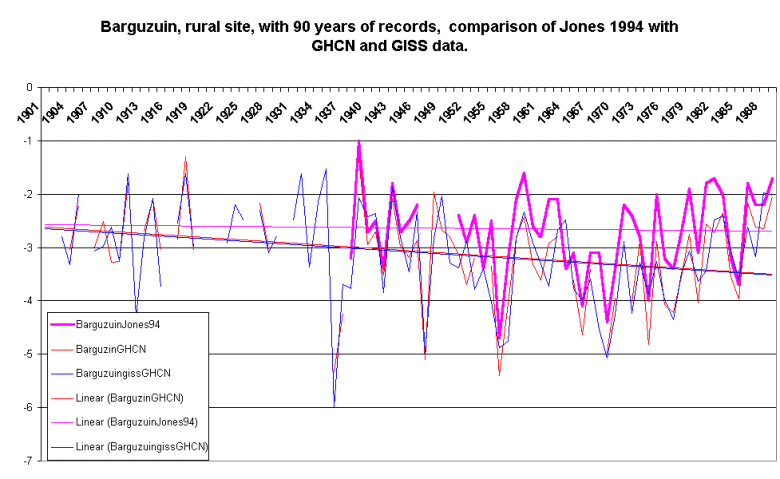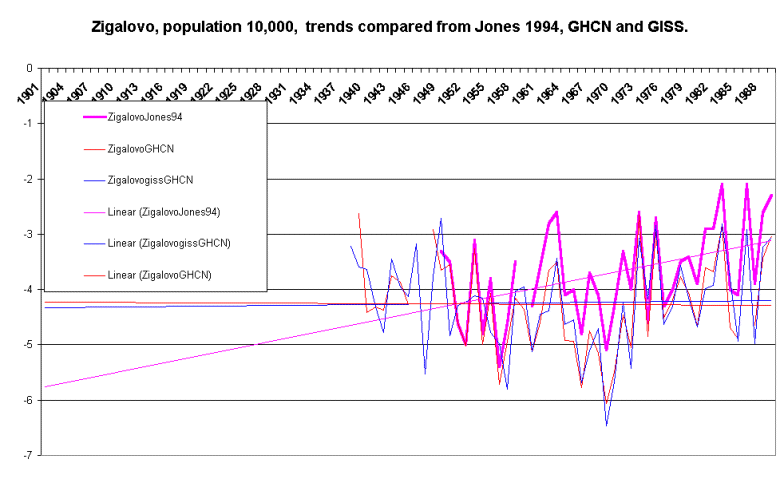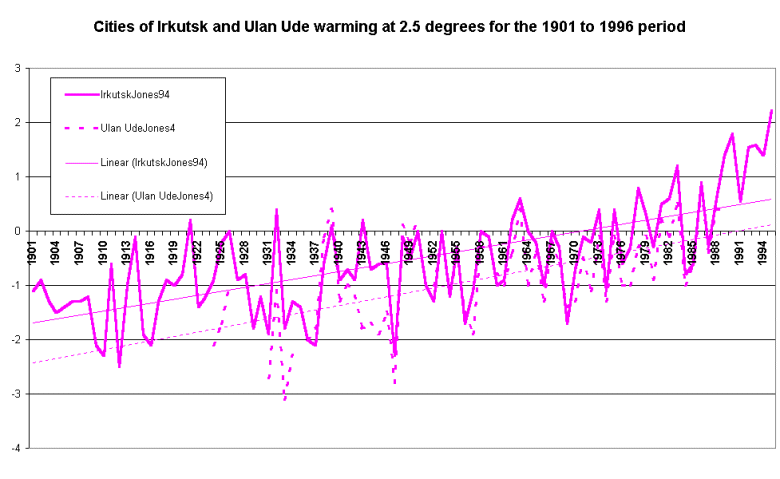
Two adjoining grid boxes warming at ~ 2 degrees contain the cities of Irkutsk and Ulan Ude, populations 550,000 and 300,000 respectively, see Fig 10. This review compares the two cities with the small town of Zigalovo (pop 10,000) and the rural Barguzin.
Figure 10 Grid Points 52.5 N-102.5E
& 52.5 N-107.5 E

Barguzin also has a sister station to the west with a shorter record. Another station with GHCN adjusted data is Kjahta SSW of Ulan Ude which has insufficient data to be of much use.
Zigalovo and Barguzin make a sufficiently homogenous pair with which to compare the two cities and data are available from the Jones 1994, GHCN and GISS. Figure 11 compares the records for Barguzin. While the Jones 1994 trend is neutral, both GHCN and show cooling of about 1 degree over the 90 years.
Figure 11

Turning now to Zigalovo in Figure 12, both GHCN and GISS find no trend over the 50 years but Jones 1994 uses only 40 years of data, in which there is a warming trend of ~1.3 degrees. This is not the first time in these reviews that Jones 1994 data is truncated relative to GHCN and GISS, with an increased warming trend as the result. If Jones’ warming trend is extended back into the early years of the century – where there is, in fact, no data in any source – the result is a trend line that manages almost three degrees warming over 95 years.
Figure 12

The two cities are shown in Figure 13, both from Jones 1994, and we
can at once see whence the warming comes in these grid boxes. The
cities are adding 2.5 degrees each. Combined with the fanciful 3
degrees warming in Zigalovo, and a doubtful neutral trend in Barguzin,
we end up with 2 degrees average warming for the region, as shown in the
Karl 1998 map.
Figure 13

The writer can only state that with all that is known about the effect
of urban heat islands on temperature trends, the continued use of data
such as these to generate large area trends has to be scientifically indefensible.
The only lengthy homogenous rural records in this area suggest that, if
anything, it may have cooled slightly over the period.
This Lake Baikal study also shows yet again how rural stations tell
a very different and cooler story than cities. And once again in
this study, the Jones 1994 data, on which Karl’s map was based, reports
far warmer trends than the GHCN and GISS.
You read it first here.
© Warwick Hughes, 2000 - 2001
globalwarming-news.com
Warwick S. Hughes, 22, July, 2000. Re-written 24, June, 2001